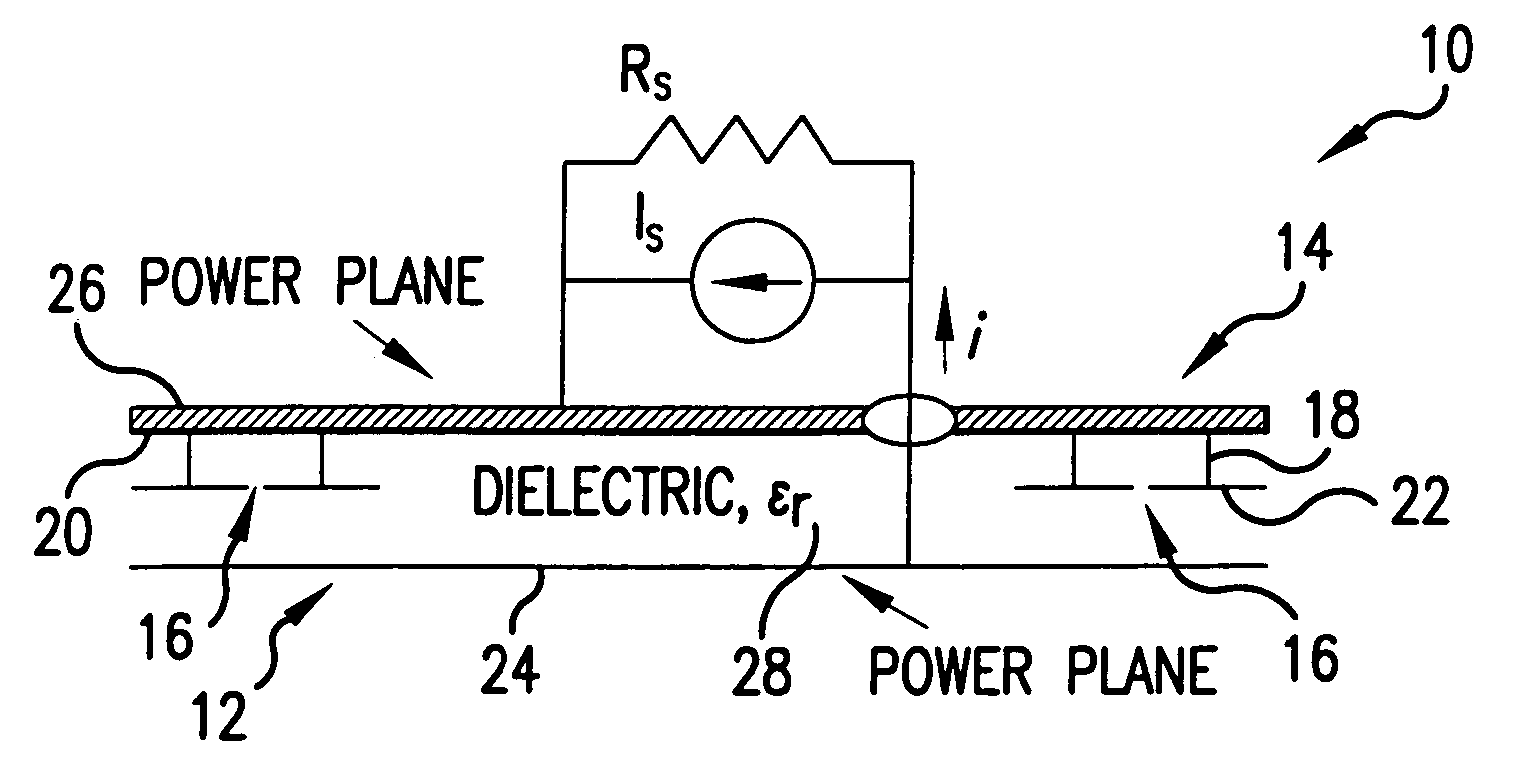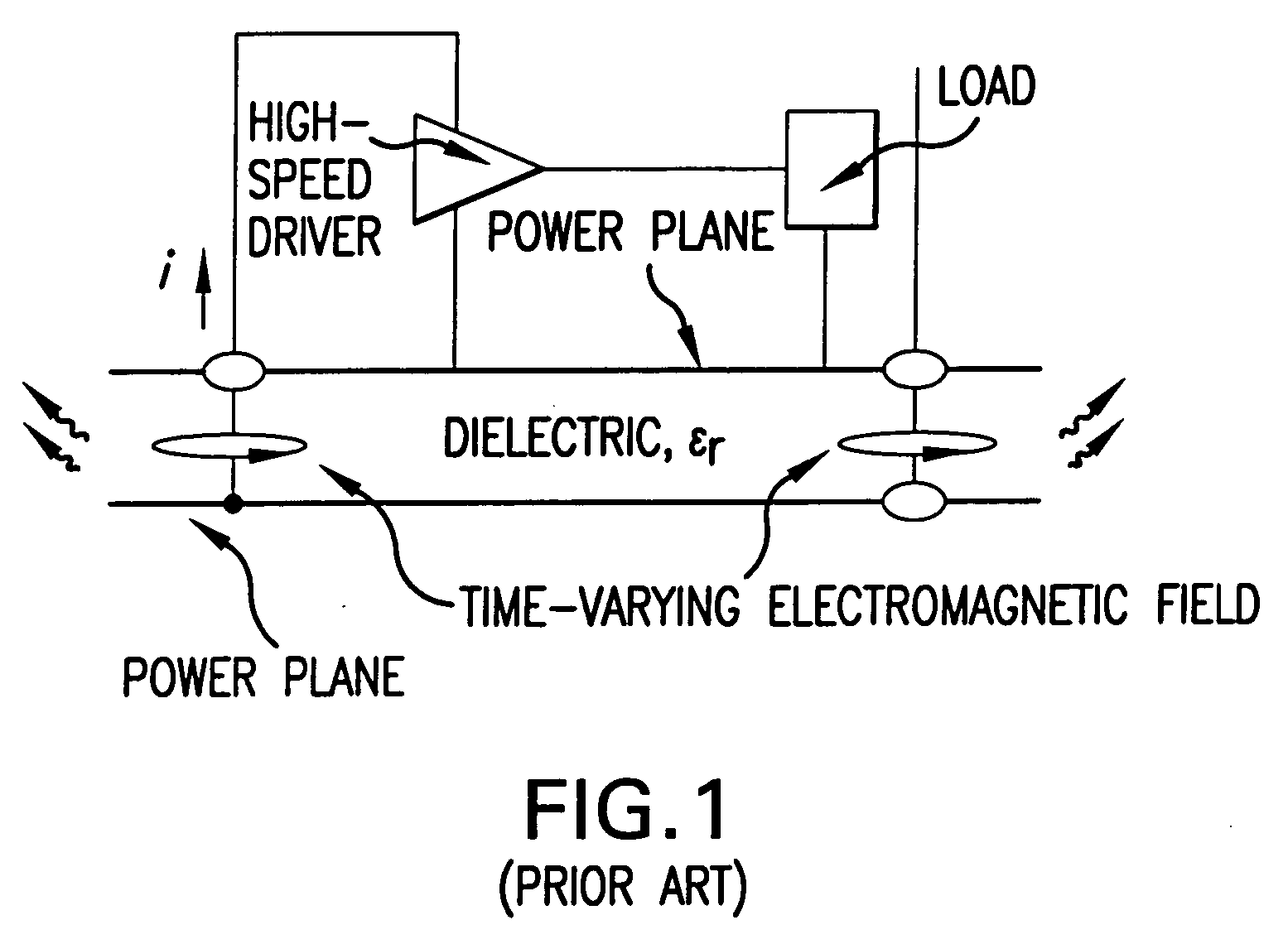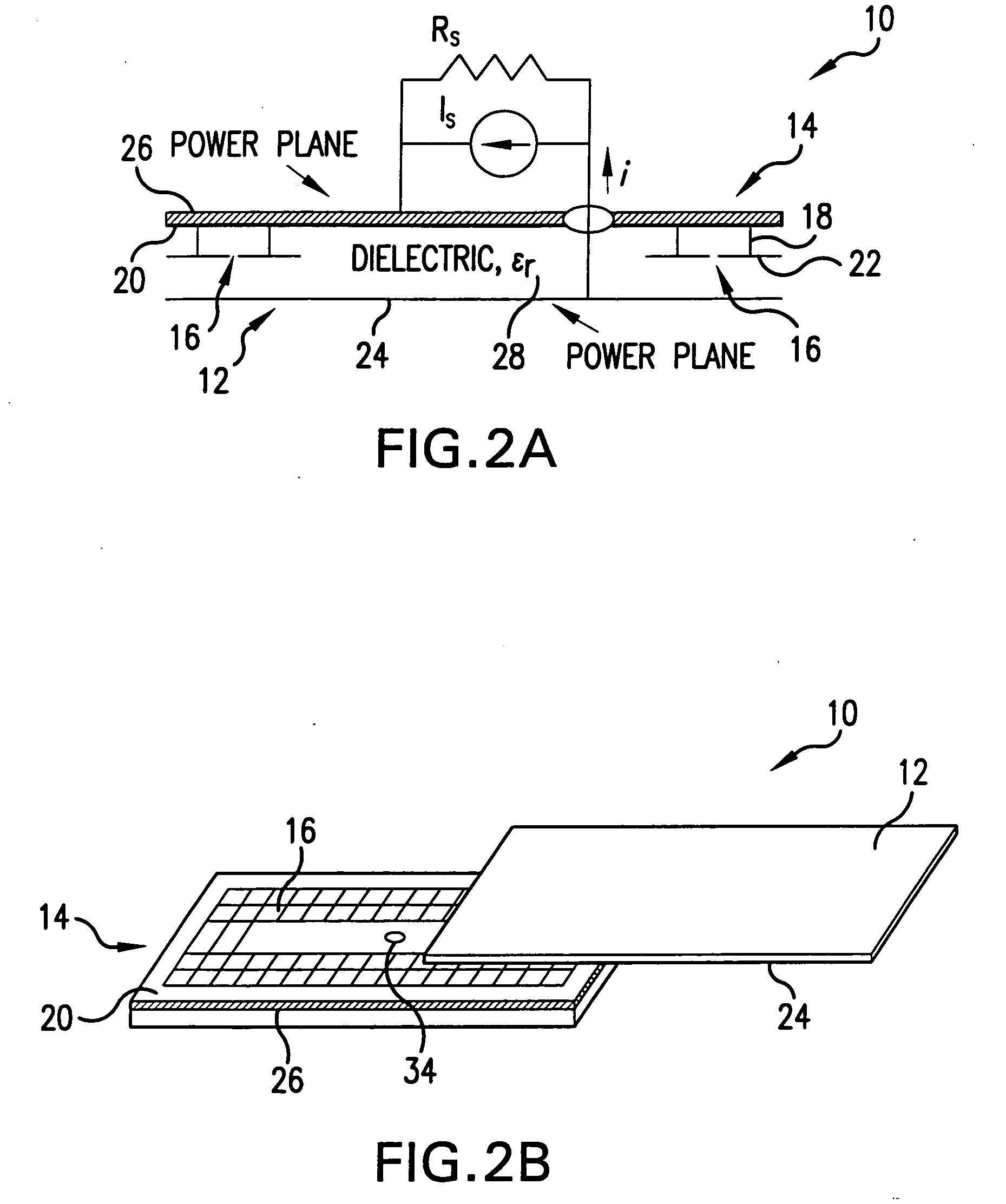System and method for noise mitigation in high speed printed circuit boards using electromagnetic bandgap structures
- Summary
- Abstract
- Description
- Claims
- Application Information
AI Technical Summary
Benefits of technology
Problems solved by technology
Method used
Image
Examples
Embodiment Construction
[0048] Referring now to FIGS. 2A and 2B, a multilayer PCB 10 includes a plurality of layers (boards), which can be implemented with commercial PCB technology. The PCB 10 includes boards 12 and 14, which has EBG structure 16 formed thereon which will be further referred to as a “patch layer”14. It will be readily understood by those skilled in the art that the multilayer PCB 10 may include more than two boards. The 2-layer design of FIGS. 2A and 2B is chosen merely for the purpose of simplicity of explanation and not to limit the scope of the present invention. It will be understood by those skilled in the art, that printed circuit boards represent one specific kind of electronic packaging, and the scope of the present invention is not limited to PCBs but is applicable to all electronic packaging methods.
[0049] The Electro-magnetic Band-Gap (EBG) structure 16 is a structure that has an electromagnetic bandgap. The EBG structure 16 is a structure, which as shown in FIGS. 2A, 2B, and ...
PUM
 Login to View More
Login to View More Abstract
Description
Claims
Application Information
 Login to View More
Login to View More - R&D
- Intellectual Property
- Life Sciences
- Materials
- Tech Scout
- Unparalleled Data Quality
- Higher Quality Content
- 60% Fewer Hallucinations
Browse by: Latest US Patents, China's latest patents, Technical Efficacy Thesaurus, Application Domain, Technology Topic, Popular Technical Reports.
© 2025 PatSnap. All rights reserved.Legal|Privacy policy|Modern Slavery Act Transparency Statement|Sitemap|About US| Contact US: help@patsnap.com



